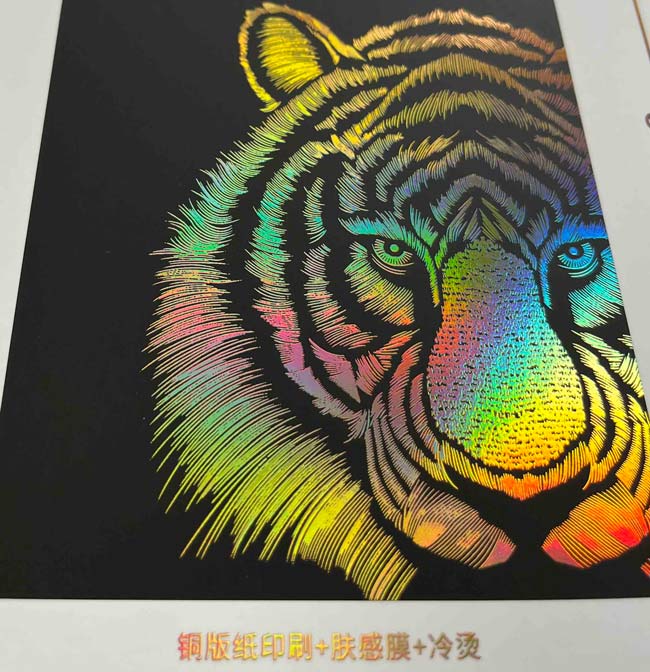An Overview of Cold Stamping
An Overview of Cold Stamping in Paper Printing Industry: Essential Insights and Applications
Cold stamping, a popular technique in the paper printing industry, offers a unique way to create visually appealing and eye-catching designs. As you learn about this innovative method, you will discover how it revolutionizes the printing process, particularly in terms of enhancing aesthetics. Employed for various applications, cold stamping utilizes metallic foils and specialized processes to add an elegant touch to substrates, including paper products.
In the domain of paper printing, cold stamping has become an indispensable tool for upgrading the quality and look of printed materials. You may come across this technique in a wide range of products, such as packaging, labels, and marketing materials. By offering a cost-efficient and environmentally friendly alternative to traditional hot foil stamping, cold stamping has proven to be an attractive option for the printing industry.
To understand the intricacies of cold stamping, it's essential to examine the differences between cold and hot foil stamping, the materials used, and the advancements in technology that have driven its popularity. As you delve deeper into this topic, you will gain valuable insights into the potential benefits and applications of cold stamping in the paper printing industry.

Cold Stamping Tiger on Custom Printed C2S Art Paper
What is Cold Stamping?
Principles of Cold Stamping
Cold stamping, also known as
cold foil printing, is a modern method used for printing metallic foil on a substrate to enhance the final product's aesthetics. This technique can be performed through two processes: the older dry lamination common in the offset printing industry, and the more versatile wet lamination prevalent in the flexo label industry.
The basic principle of cold stamping involves applying adhesive on the substrate's surface where the foil will be adhered. In contrast to hot foil stamping, cold stamping uses standard offset printing plates and doesn't require a separate foil-stamping metal die. After applying the adhesive, the metallic foil and the substrate are pressed together. The process is then completed with the help of ultraviolet (UV) light that cures the adhesive, resulting in the foil bonding to the desired area.
Significance in the Paper Printing Industry
Cold stamping has gained importance in the paper printing industry due to its versatile applications and lower costs compared to
hot foil stamping. This technique saves time and resources, as it is possible to perform cold stamping in-line on a press using standard printing plates. The process's simplicity has made it a popular choice for various sectors within the industry, including packaging, labels, and collateral materials.
Moreover, cold stamping provides a high-quality, elegant finish to printed items, making it an ideal choice for adding visual appeal and value to products. The ability to create intricate designs with metallic foil has opened up new avenues for creative expression and branding opportunities. With its cost-effective and efficient process, cold stamping continues to reshape the paper printing industry, offering a competitive advantage for businesses in the market.

Cold Stamping Capricornus on Coated Paper
Process of Cold Stamping
Preparation
Before you begin the cold stamping process, it is essential to select the appropriate substrate. Smooth surfaces, such as coated papers, are ideal for this technique. Moreover, selecting a suitable cold foil adhesive and foil materials is also crucial. Foil grades differ in color, gloss, and adhesion properties, so choose one that fits your project's specific requirements.
Application
The cold stamping process starts with applying the adhesive onto the desired area of your substrate. This is usually done using a traditional printing press, where the adhesive is transferred onto the paper like conventional ink. Once this is complete, your substrate moves to the next station, where the cold foil is pressed onto the adhesive-coated areas. The metallic finish is thus transferred from the foil to your product. Remember that cold foil printing can achieve gradients and halftones, making it suitable for more intricate designs than hot foil stamping.
The Role of Pressure
During the cold stamping process, applying adequate pressure is vital. When the foil is pressed onto the adhesive, pressure ensures that the foil adheres effectively to the substrate. Note that too much pressure could cause the foil to transfer beyond the planned design, while insufficient pressure might hinder the foil from adhering properly. It's essential to strike the right balance and adjust the pressure accordingly for optimal results.
Advantages of Cold Stamping
Cold stamping is a popular technique in the paper printing industry due to its numerous benefits. As a user of cold stamping technology, you will find that this method offers you the following advantages.
-
Cost-effective: Cold stamping is generally more affordable compared to hot stamping, making it a viable option for most printing projects. In fact, hot stamping can be 40-60% more expensive than cold forming.
-
Time-saving: Switching between projects or designs on a cold stamping setup is faster than with hot stamping. With hot stamping, changeover times can take anywhere from 30 minutes to 8 hours, while cold stamping requires only a few modifications to adapt to new designs or patterns.
-
Compatibility: A notable advantage of cold stamping is its ability to easily integrate with various printing environments, including digital inkjet and flexography printing machines. Cold stamping seamlessly integrates with these systems, making it versatile and adaptable for your needs.
-
Inline process: Another benefit of cold stamping is that it can be performed as an inline process, which means it occurs concurrently with other printing processes, reducing the need for additional steps in the production line. This feature further contributes to cost and time savings in your printing operations.
-
Aesthetic appeal: Cold stamping enhances the visual appeal of your printed materials by allowing you to create intricate designs and patterns using metallic foils. This method contributes to a high-quality, eye-catching finish on your products, which can be instrumental in making a strong impression on your target audience.
By using cold stamping in your paper printing projects, you can reap the benefits of cost savings, time efficiency, versatility, and enhanced aesthetics, all while meeting the demands of your clients and the industry.

Cold Stamping Taurus on C2S Coated Paper
Challenges in Cold Stamping
Technical Challenges
Cold stamping in the paper printing industry, also known as cold foil printing, relies on adhesive and pressure to transfer metallic foil to a substrate, enhancing the final product's aesthetics. Although this process offers some benefits, it presents several technical challenges. The complexity of cold stamping can make it difficult to achieve consistent results, as minute adjustments in pressure or adhesive application can lead to different outcomes.
Furthermore, cold stamping doesn't quite match the metallic effect of hot foil stamping in terms of graphics and text quality, which is often more easily achieved with hot foil stamping source. Another challenge involves working with high-strength steels, which can cause difficulties at the cold stamping stage source.
Environmental Factors
In addition to technical challenges, environmental factors play a role in the success of cold stamping. Temperature fluctuations and humidity can directly affect the adhesive's performance, potentially causing inconsistent results. It is essential to maintain a controlled environment to ensure the quality of the final product. Proper storage and handling of both the substrate and the metallic foil are crucial to combat these challenges.
To overcome these issues, you may need to invest in specialized equipment and materials to control environmental factors, which can be a considerable expense. Additionally, it may be necessary to commit to ongoing monitoring, maintenance, and process adjustments to maintain the quality and consistency of your cold-stamped products.
Future of Cold Stamping in Paper Printing Industry
As you continue to explore the paper printing industry, it's important to be aware of the future trends and developments in techniques like cold stamping. Cold stamping, also known as cold foil stamping, is a modern method of applying metallic foil to substrates for enhancing the aesthetics and value of the final product.
In the coming years, the demand for personalized and high-quality printed materials is expected to grow. This growth will facilitate the need for advanced printing methods such as cold stamping. The increasing focus on environmentally friendly practices and processes will also contribute to a wider adoption of cold stamping since it eliminates the use of heat and requires less energy consumption compared to traditional hot stamping.
Furthermore, technological advancements are continuously being introduced in the field of cold stamping. Companies are investing in research and development to improve the efficiency, quality, and feasibility of this process. For instance, cold foil printing technology has evolved to offer a vast range of creative possibilities, making it a preferred choice for printing banknotes, gift cards, and security-sensitive materials.
As a stakeholder in the paper printing industry, you should pay close attention to these evolving trends and adapt accordingly to stay competitive and offer clients the best possible solutions. With cold stamping, you can ensure product differentiation in the market, meeting your clients' needs for visually appealing and secure printed materials. The future of the paper printing industry indeed looks promising for those willing to embrace innovative techniques like cold stamping.

Cold Stamping Figure on Printed Film
Cold Stamping with Custom Brand Design - Your Expert Factory in China
Unico Packing is a leading factory in China to make custom brand packaging boxes, and your design can be made with cold stamping. If you are looking for any packaging supplier in China, welcome to contact us for a quote. It's certain we will not let you down.



